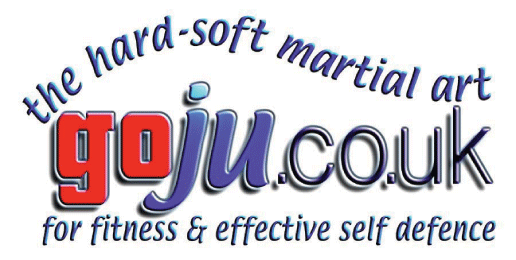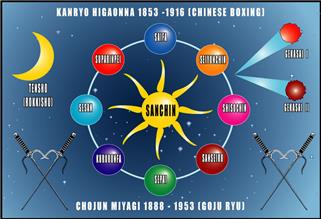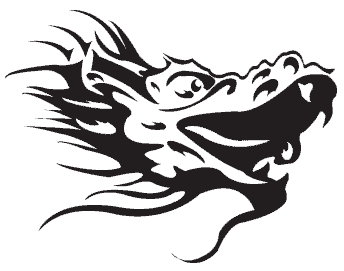It is documented that Okinawa karate is founded on the Southern schools of Chinese boxing. Modern Goju-ryu is believed to be originally based upon Fujian Crane boxing, Whooping Crane boxing and it’s founder Xie Zhong Xiang (AKA Ru Ru Ko). Many Goju-ryu stylists would like to think of their system as an unadulterated and traditional method handed down from Ru Ru Ko to Higashionna Kanryo and finally to Miyagi Chojun, but recent evidence suggests the contrary. Goju-ryu is Miyagi Chojun’s personal interpretation of his instruction from Higashionna Kanryo in conjunction with his own research.
Miyagi Chojun spent most of his life’s energies and his sizeable family fortune devoted to studying the fighting arts. During his studies he came into contact with such fighting traditions as Fujian White Crane boxing, Tiger boxing (Hu Quan), Monk fist boxing (Lohan Quan)and quite possibly Five Ancestor fist boxing (Go Cho?? interesting comparison) (Tokashiki 1991; Kinjo 1999). These diverse styles are reflected in the kata of Goju-ryu.
Few practitioners of the style are aware of these facts or have little interest in Goju-ryu’s development. All kata in Okinawan Karate-do are fundamentally the same; strikes, blocks, kicks, grabs, chokes, throws and immobilization techniques. But what makes each kata unique is it’s use of body mechanics (posture), energy utilization (breath) and projection (ki or chi).
Goju-ryu has only twelve core kata in its curriculum: Gekisai (dai ichi & dai ni), Saifa, Seiyunchin, Seisan, Saipai, Shisochin, Sanseiru, Kururunfa, Sanchin, Tensho, and Suparenpai (Pichurin). Students in most schools are required to know all of these kata before reaching sandan.
We have introduced a basic stances Kata (Kihon Dachi), the sole purpose of which is to give new students an easy to learn routine that will teach them almost all the basic stances, which they can then practice in their own time. This basic Kata has also caught a few senior students out in the past, proving that you must never neglect the basics!
We have strived to keep the Kata as close as possible to their traditional origins as performed by Sensei Terou Chinen.
Warning:
If you perform any technique shown here in class or in public, you do so at your own risk.
We assume no responsibility for the use or misuse of the information provided which results in injury or loss.
Copyright: Tom Hill 2012 Goju.co.uk All rights reserved.
UPDATED 1st AUG 2020


Goju Ryu, Kata
(Hard soft school, Form)
The word “Oyo”, means “practical use.” Oyo is the best term to use in Japanese when referring to kata applications.
“Bunkai” a word that means "to take apart" or "to break down.“
Literally, it means "to analyze" when used as a verb.
Applications are but one way to analyze a kata, so this word is a little vague and probably not as clear as Oyo.
Sometimes the words are combined to create 'Bunkai oyo'
More on Kata in other parts of the site
or click on the utube symbol for our videos.





























